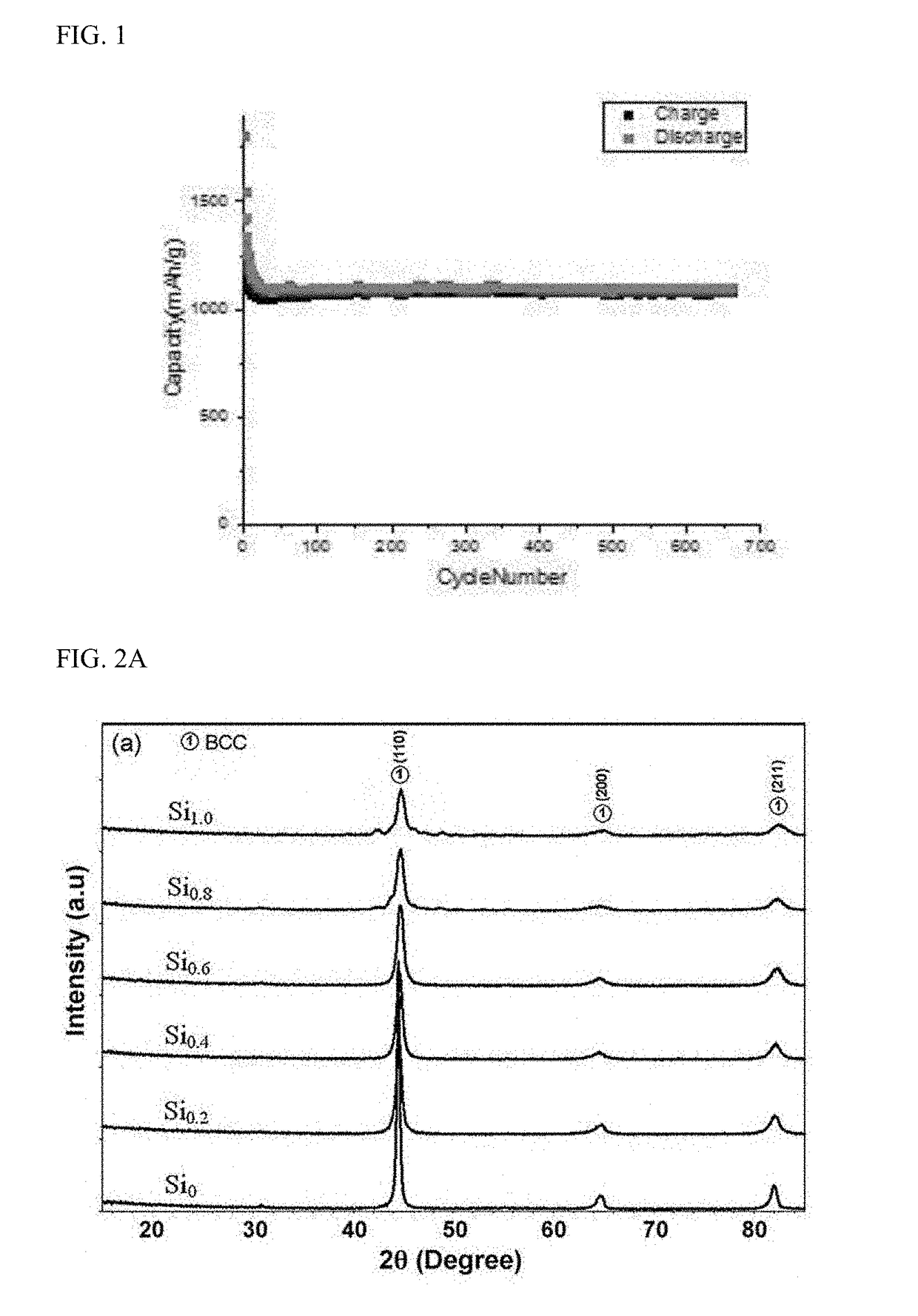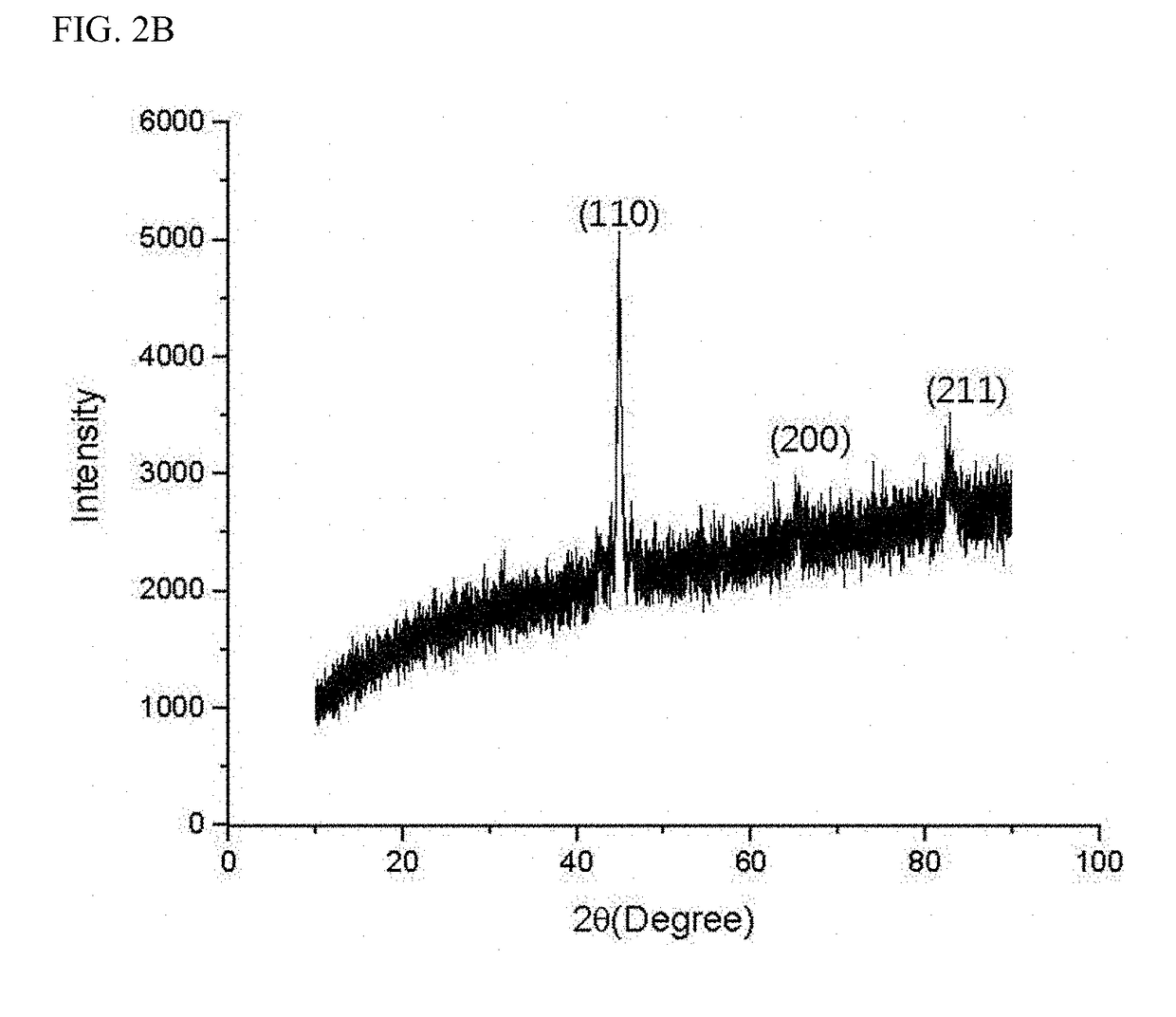Material of negative electrode for lithium secondary battery
a lithium secondary battery and material technology, applied in the direction of negative electrodes, electrochemical generators, cell components, etc., can solve the problems of reducing the stability and capacity of lithium ion batteries, affecting the life carbon-based materials such as graphite are not compatible with lithium secondary batteries, so as to improve the lifetime of lithium secondary batteries, prevent the destruction of negative electrode materials, and high entropy
- Summary
- Abstract
- Description
- Claims
- Application Information
AI Technical Summary
Benefits of technology
Problems solved by technology
Method used
Image
Examples
Embodiment Construction
[0036]The terminology used herein is for the purpose of describing particular embodiments only and is not intended to be limiting of the invention. Also, the terminology used herein is interpreted in a general sense as understood by those skilled in the art unless it is defined in different senses in the present disclosure. The terminology used herein is not intended to be interpreted in an excessively comprehensive sense or in excessively reduced meaning. Also, when the terminology is not appropriate to convey the concept of the disclosure, the terminology may be substituted by the terminology suited for those skilled in the relevant field of technology. Also, the general terminology used herein is intended to be interpreted according to the dictionary definition or according to the context in which the terminology is used, and is not intended to be interpreted in an excessively limited sense.
[0037]Also, the singular forms of expression used herein include the plural forms of expre...
PUM
| Property | Measurement | Unit |
|---|---|---|
| Fraction | aaaaa | aaaaa |
| Fraction | aaaaa | aaaaa |
| Fraction | aaaaa | aaaaa |
Abstract
Description
Claims
Application Information
 Login to View More
Login to View More - R&D
- Intellectual Property
- Life Sciences
- Materials
- Tech Scout
- Unparalleled Data Quality
- Higher Quality Content
- 60% Fewer Hallucinations
Browse by: Latest US Patents, China's latest patents, Technical Efficacy Thesaurus, Application Domain, Technology Topic, Popular Technical Reports.
© 2025 PatSnap. All rights reserved.Legal|Privacy policy|Modern Slavery Act Transparency Statement|Sitemap|About US| Contact US: help@patsnap.com



